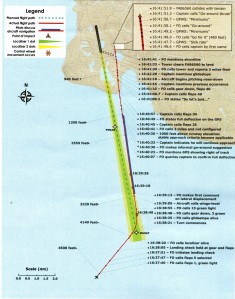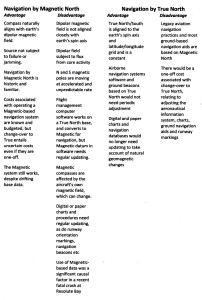The Covid-19 pandemic’s dramatic effect on air travel has accelerated aircraft retirements, particularly older long-haul types. This, of course, includes the undisputed Queen of the Skies, the Boeing 747, the withdrawal of which has been the cause of many misty-eyed moments among aviation romantics.
The “other jumbo”, the Airbus A380 was already suffering a crisis of its own before Covid’s arrival, and the pandemic motivated the manufacturer to put the trickling production line out of its misery.
The A380 – technically an excellent, if over-engineered aircraft – was the victim of a miscalculation by Airbus way back in the late 1980s-early 1990s about the shape of future global air transport. The A380 was to replace the 747, but the belief that a replacement would be needed at all was based on an assumption that the industry would continue to develop much as it had in the previous three decades.
That didn’t look like a bad decision at the time, but Boeing’s predictions turned out to be far more accurate. The US manufacturer foresaw the diminution of the importance of hub-and-spoke networks feeding the world’s major airports where they sit astride the globe’s air travel arteries – the traditional trunk routes. The A380 was ideal for serving these.
But the American manufacturer’s crystal ball showed smaller widebody twins taking over from thirsty quads, and carrying passengers who wanted it straight past the massive hubs directly to the secondary cities. The 767 was already showing the way in the 1990s, with American carriers on transatlantic routes, but the 777 and 787 extended the possibilities. Darwin had smiled on Boeing.
Although Airbus was also ready for many of these long-haul twin opportunities with its flexible A330 twin series (and now the A350), in the mid-1990s the four-engine A340 had initially become much more popular than Airbus had predicted. Europe, culturally less of a risk-taker than the USA, was not yet ready to fly twins over extended oceanic routes, or over endless Arctic and Siberian wildernesses. In a quad, an engine failure raises the crew’s blood pressure a bit, but they can elect to continue to destination. In a twin, it means an instant diversion.
Meanwhile, across the Atlantic, in July 1995, Boeing and the Federal Aviation Administration were ready to gamble on bringing a brand-new big twin, the 777, into service with pre-cleared permission to fly over oceanic or wilderness regions where the nearest diversion airport could be up to three hours away at single-engine flying speed. That extension from the previous 2h meant there were hardly any routes a twin couldn’t fly. Boeing and its FAA partner went for it; and what’s more they got away with it. A single early-days disaster would have put paid to that policy, but it didn’t happen, and now everyone takes 180min ETOPS (extended twin engine operations) for granted. Darwin had smiled on Boeing once more.
Today, in the pandemic, the Airbus A340 is suffering a fate similar to the 747’s, but there will be fewer tears simply because it could not have achieved the iconic status the 747 had won through its status as the world’s first jumbo jet, its sheer longevity, and its unique shape.
Among today’s widebodies, Darwin will continue to smile on the newer big twins, and the few remaining tri-jets and the older big twins will be parked or converted to freighters before their time would normally be up. Meanwhile, the marketplace that the new big twins have had to themselves for some time is to be invaded by what may turn out to be a particularly timely product: Airbus’ single-aisle venture into long-haul, the A321XLR.
Another anomaly brought by the pandemic is that air cargo has been the saviour of many airlines during the pandemic, because unlike passenger traffic, cargo has hardly been affected. For example, Taiwan’s China Airlines has just announced an operating profit for 2020 on the back of cargo, and recently took delivery of a new 777F.
Short-haul – and thus the single-aisle fleet – has not been hit as hard as long-haul simply because domestic air travel is free of the border restrictions that nation states impose on travellers when they fear the spread of infection from abroad. But as in their long-haul fleets, airlines are still disposing of the earlier versions of their 737s, A320s and regional aircraft.
Exceptionally on a global scale, the US domestic carriers are forecasting break-even levels of passenger business by June, with strong demand from the leisure travel market, although there is slightly less confidence in a business travel rebound. Domestic carriers elsewhere, in less geographically large countries – particularly those with mature high speed rail networks – will take longer to recover than the likes of American, Delta, United and Southwest, and may not have had the government injection of survival cash the US airlines have had – plus the boost from the fact that the USA has successfully accelerated its Covid vaccination programme. Is that Darwin smiling on America again, or just on big, prosperous nations? He may well be smiling on China too.
No-one can be sure of the post-Covid shape of the world’s commercial air transport industry. Truisms, abound, like the contention that the strongest carriers will survive, and that the pandemic’s result will be further consolidation and fewer airlines. One of the unknowns is whether people’s travelling priorities will have changed, especially in the light of growing concern about climate change. Will long-haul, in particular, be a victim of such a concern?
But at present, whenever there is a hint that lockdown may be eased, people are rushing to book holiday travel. Air travel will indeed survive, the question is: what will it look like?



